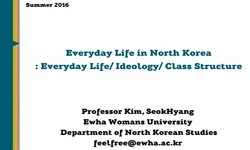Aims: This study aimed to reveal nationwide anti-HCV prevalence in 2015, and to compare it with a previous survey in 2009, South Korea. Methods: A total of 268,422 subjects who underwent health-check examination including anti-HCV antibody in nationwi...
http://chineseinput.net/에서 pinyin(병음)방식으로 중국어를 변환할 수 있습니다.
변환된 중국어를 복사하여 사용하시면 됩니다.
- 中文 을 입력하시려면 zhongwen을 입력하시고 space를누르시면됩니다.
- 北京 을 입력하시려면 beijing을 입력하시고 space를 누르시면 됩니다.
The Nationwide Seroprevalence of Anti-HCV Is Decreasing from 2009 to 2015 in South Korea = The Nationwide Seroprevalence of Anti-HCV Is Decreasing from 2009 to 2015 in South Korea
한글로보기https://www.riss.kr/link?id=A105522772
-
저자
( Eun Sun Jang ) ; ( Moran Ki ) ; ( Geum-youn Gwak ) ; ( Kyung-ah Kim ) ; ( Gi-ae Kim ) ; ( Do Young Kim ) ; ( Dong Joon Kim ) ; ( Man Woo Kim ) ; ( Sung Eun Kim ) ; ( Yun Soo Kim ) ; ( Young Seok Kim ) ; ( In Hee Kim ) ; ( Chang Wook Kim ) ; ( Ho Dong Kim ) ; ( Hyung Joon Kim ) ; ( Neung Hwa Park ) ; ( Soon Koo Baik ) ; ( Jeong Ill Suh ) ; ( Byung-cheol Song ) ; ( Il Han Song ) ; ( Jong Eun Yeon ) ; ( Byung Seok Lee ) ; ( Youn Jae Lee ) ; ( Young Kul Jung ) ; ( Woo Jin Chung ) ; ( Sung Bum Cho ) ; ( Eun-young Cho ) ; ( Hyun Chin Cho ) ; ( Gab Jin Cheon ) ; ( Hee Bok Chae ) ; ( Dae Hee Choi ) ; ( Sung-kyu Choi ) ; ( Hwa Young Choi ) ; ( Won Young Tak ) ; ( Jeong Heo ) ; ( Sook-hyang Jeong )
- 발행기관
- 학술지명
- 권호사항
-
발행연도
2017
-
작성언어
-
- 주제어
-
KDC
500
-
자료형태
학술저널
-
수록면
73-74(2쪽)
- 제공처
-
0
상세조회 -
0
다운로드
부가정보
다국어 초록 (Multilingual Abstract)
Aims: This study aimed to reveal nationwide anti-HCV prevalence in 2015, and to compare it with a previous survey in 2009, South Korea.
Methods: A total of 268,422 subjects who underwent health-check examination including anti-HCV antibody in nationwide 33 hospitals from Jan 2015-Dec 2015, were enrolled in this study. For those showing positive anti-HCV, medical records were reviewed to search whether tests of HCV RNA or the antiviral treatment were performed.
Results: Age, gender and area-adjusted anti-HCV positive rate was 0.60% (95% CI 0.57-0.63%) based on the estimated standard population of Korea in 2015. Anti-HCV prevalence was higher in females (0.66%, 95% CI 0.61-0.71) rather than in males (0.54%, 95% CI 0.51-0.58). It showed gradual increase according to age (0.38% in 40s, 0.61% in 50s, 1.06% in 60s, and 1.63% in 70s). The most prevalent area of anti-HCV in South Korea was Jeju (1.54%), followed by Gyeongbuk (0.95%), Gyeongnam (0.89%) and Busan (0.88%). Compared to the previous nationwide data in 2009, the odds ratio of adjusted anti-HCV prevalence was 0.70 (95% CI 0.70-0.71), showing 30% decrease of anti-HCV positivity. Among 7 metropolitan cities and 9 provinces, Chungbuk (0.62%, OR 1.22, 95% CI 1.18-1.26) and Jeju (1.54%, OR 5.35, 95% CI 5.00-5.72) showed increased anti-HCV positivity compared to those in 2009. Of 1,359 anti-HCV positive subjects, 776 (57.1%) had tested for HCV RNA, showing an increased testing rate compared to it in 2009 (27.8%). A total of 251 (18.4%) of anti-HCV positive subjects had received antiviral therapy until Dec 2016.
Conclusions: The anti-HCV seroprevalence in South Korea decreased from 2009 to 2015. Moreover, subsequent HCV RNA test rate was increased, though not optimal yet. Regional variation of anti-HCV positivity and change of the prevalence warrants continuous monitoring of HCV epidemiology for optimal strategy of national HCV control.
동일학술지(권/호) 다른 논문
-
- 대한간학회
- ( Jem Ma Ahn )
- 2017
-
Impact of Model for End-Stage Liver Disease Score Based Allocation System in Korea
- 대한간학회
- ( Juhan Lee )
- 2017
-
- 대한간학회
- ( Jong Man Kim )
- 2017
-
Major Hepatectomy for Hepatocellular Carcinoma Patients with Poor Indocyanine Green Clearance
- 대한간학회
- ( Kenneth Siu Ho Chok )
- 2017




 KISS
KISS






